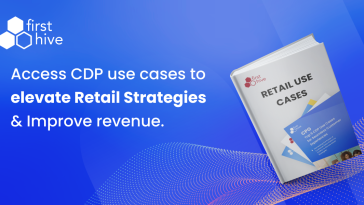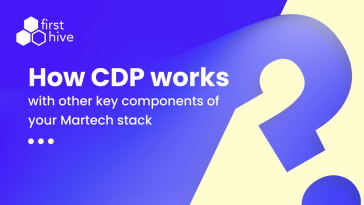The courtship between a customer and your brand begins at the first touchpoint. While brands have detailed flows of how a customer should discover your brand and how you need to interact with her, it is always different with each customer.

Marketers use Customer Lifecycle Management (CLM), a methodology to bring all sources of static and dynamic data, marketing processes, and value-added services to a unified decision supporting platform through iterative phases of customer acquisition, retention, cross- and upselling, and lapsed customer win-back. This helps a marketer calculate the value of each customer to the business across the sales funnel.
Some marketers choose to design the customer experience trail in great detail. Here is an example of how phases in a CLM model are further assigned to different touchpoints. CLM gets complex because customers do not go over a linear approach to purchase a good or service. Customers can oscillate between different touchpoints in a non-linear pattern across the different stages of a customer lifecycle.
| Touchpoints | |
| Acquisition |
|
| Onboarding | First few experiences of a customer with the brand include
|
| Profiling | This phase in a customer’s lifecycle focuses on optimizing the lifetime value of a customer. Marketers divide the customer database into cohorts that matter to different metrics. Some aspects that determine cohort management are:
|
| Scaling Up |
|
| Retention |
|
| Termination | It is not necessary that a customer walks away because of a dissatisfied experience. It could also be due to
However, if a customer chooses to terminate, then marketers need to plan for an exit experience too. |
Before you proceed further to understand how a Customer Lifecycle is tracked in a Customer Data Platform vs a Data Management Platform, here is a quick note on — how CLM is different from the customer journey. These terms are often used interchangeably.
| Customer Lifecycle marketing vs Customer journeys | |
| Customer Lifecycle marketing is owned, designed and managed by marketers to track the success of sales funnel for each customer. | Customer Journeys are paths designed by the customer alone. Each customer’s journey is unique as it is carved by the decisions of the customer. |
To implement a full Customer Lifecycle as desired by your marketing objectives, you need a unified platform that provides for a single customer view across all marketing activities and interactions. You also need to inspect your customer data on a regular basis. Apart from this, you need to measure the customer and brand association at every stage of the lifecycle.
However, the success of CLM largely depends on the data control tool that you intend to use. And, that brings us to explore the length and breadth of a Customer Data Platform (CDP) vs a Data Management Platform (DMP).
DMP is an older, centralized solution that is used by the data analysts and data centers to furnish insights to marketers. But, CDP is a rather recent marketing technology that is managed by the marketer. This table will explain the role of each of these technologies
| Customer Lifecycle Stage | Parameters | Customer Data Platform | Data Management Platform |
| Acquisition | Data Types | Provides anonymous first-party data, secondary and tertiary customer data. | Manages and provides third-party data. |
| Data Storage | CDPs can store data for long periods | DMPs can store it for up to 90 days. | |
| Onboarding | Data Integration | Includes all marketing functions and tools:: Customer relationship management. Integrates with any channel interaction or information system, including Adtech. | Specific to advertising: Targeting ads better. Improving media buying efficiency. |
| Profiling | Customer segmentation | Tangible customer attributes (PII) – customer ID, name, email, address, etc. It can also profile based on customer’s psychographics, product usage, and behavior. | DMPs use anonymous digital identifiers (non-PII) – cookie ID, IDFA, etc. |
| Analytics | Customer data is stored in a single, scalable place, making it fast and flexible to read through and analyze all the data at once. A unique customer ID is assigned to each customer that is identifiable across channels for further analysis. | DMP stores customer data in a large database but creates a subset of that database for quick access. | |
| Scaling Up | Multi-channel access | CDPs are tagged with a unique customer identifier across all marketing channels. They allow access to offline transactional data, social media channels, and associate sentiments with customer behavior using intelligent algorithms. | DMPs are good for all digital channels where quick marketing decisions can be made to reach an audience.
However, offline channels are not effectively captured in all versions of DMP. |
| Retention | Loyalty Programs | CDPs can initiate and manage campaigns from the single CDP dashboard to execute loyalty programs. They may include initiation, tracking, and redemption of customized and auto-generated coupon codes, QR codes, discounts, points, etc. | DMP cannot launch multi-channel campaigns. It is best used as an aid tool for ad campaigns. |
| Termination | Retargeting | Based on historic interactions and data, the future intent of terminated customers could be identified. The high-value customers could still be considered for retargeting. CDPs also provide predictive analytics for this phase. | DMPs do not store data beyond 90 days and retargeting cannot be implemented with accuracy for data that does not exist. |
To implement a full-scale customer lifecycle management process, you need to look for the following capabilities in a CDP:
- Data Integration
- Data Storage and security
- Customer segmentation
- Campaign Management
- Omni-channel customer journey orchestration
Should you have any questions, talk to a CDP expert at FirstHive. Reach out to us at marketing@firsthive.com








